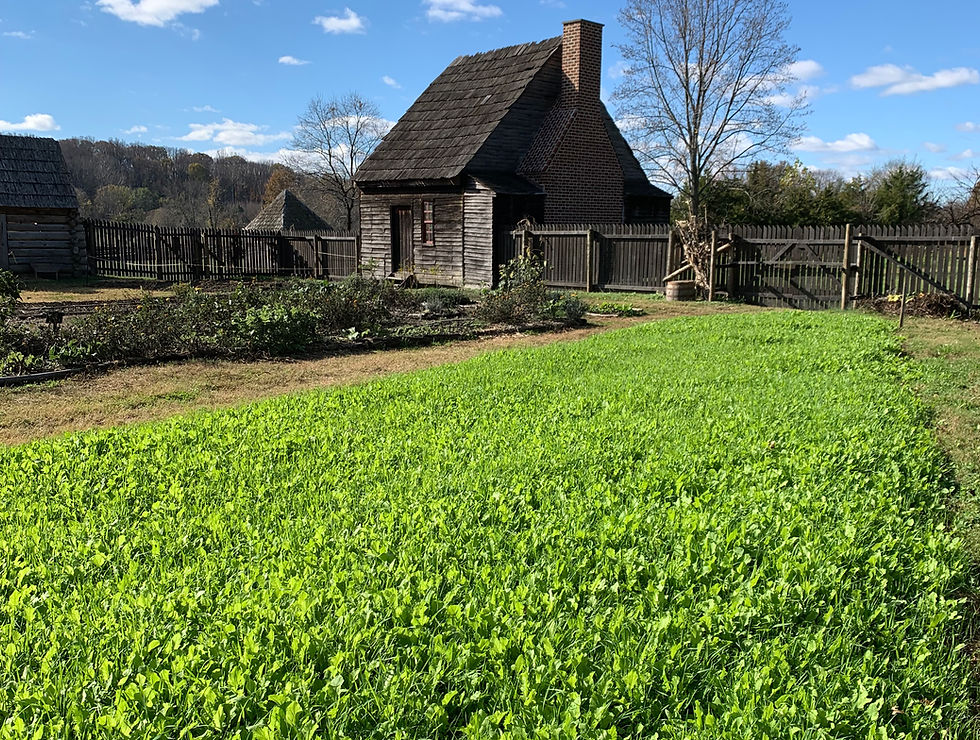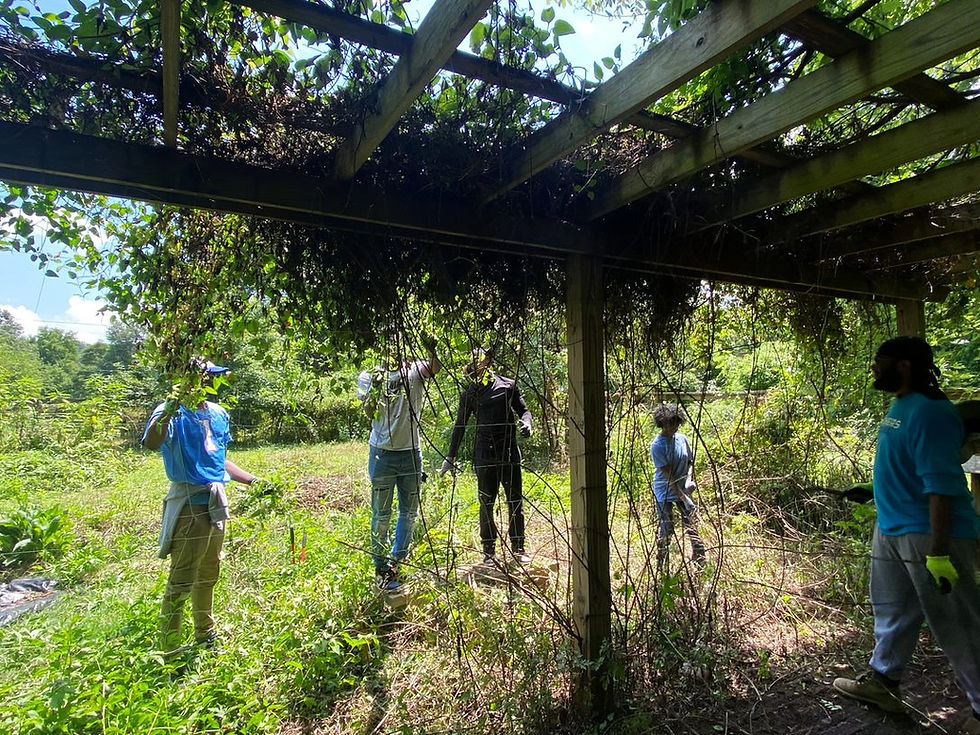Field Notes: Volume 16, Number 7
- Accokeek Foundation

- Jun 17, 2011
- 4 min read

This Week’s Harvest
Scallions or Green Onions
Lettuce
Chard
Beets
Radishes or Kohlrabi
Cucumbers
Tomatoes
While we strive for consistency at the Ecosystem Farm, we ask that our SHAREholders please keep in mind that Friday and Tuesday harvests will not always be the same.
For your convenience, an exact harvest list will be posted in the packing shed.
The farm staff has spent the past week enjoying the last cool mornings of spring and looking forward to growing abundance as the seasons progress. Through Chesapeake CRAFT, Courtney and Colette were able on Wednesday to visit One Straw Farm in White Hall, Md., the largest certified-organic farm and CSA in the state. There, with close to 50 others in attendance, the two were led toward dreams of tunnel-grown raspberries, ideas for better soil management, and plans to use well-timed plantings to take the upper hand on some of our insect pests.
Indeed, the farm staff has scheduled their plantings in accordance with pest pressures, putting several successions of summer squash and cucumbers into the ground to ensure bountiful (and continuing) harvests and holding off on growing Brassicas during the summer months, when harlequin bugs and flea beetles would decimate the plants. The staff has also modified their plantings and harvests to encourage beneficials, those insects that pollinate our vegetables and help keep pests under control. The cilantro, for instance, was harvested once, and then left alone to go to flower; the bed now provides food and forage for pollinators and parasitic wasps. As the insects and plants continue to move and grow around us, the farm staff has implored our SHAREholders to enjoy the good energy and exceptional tastes of the food you receive. It is grown and tended with grand intention.
Up Close With Radishes
Often relegated to mere garnish status, the radish is a crisp and deliciously spicy member of the mustard family (Cruciferae) and a close relative of the Brassicas. The earliest cultivated varieties were black-skinned and quite large. Today, radishes are grown for their roots, edible leaves, seed pods, or oil-bearing seeds.
Throughout history, the radish has occupied a place on the dinner table and in the medicine cabinet. Writes Rebecca Rupp in her book Blue Corn and Square Tomatoes:
[The radish] was used as a general-purpose antidote to poison, to treat viper or adder bites, to alleviate the pains of childbirth, and to remove freckles. John Gerard recommended radish roots for baldness, mashed with honey and mixed with a little power of dried sheep’s heart. William Salmon prescribed “juyce of Radishes” for deafness, at the top of a list of less appealing remedies, including the “fat of a mole, eele, or serpent,” essence of bullock’s gall, and distilled boy’s urine.
More interested in the radish as an edible than as a cure-all? Radishes can be sliced into a salad, eaten raw with butter and sea salt, marinated in lime juice, salt, and chili-powder, or pickled. Radish greens make a nice addition to soups, salads, and stir-fries. Both the roots and the greens can be kept for several days in the refrigerator; just be sure to store them separately.
Below, photos from this week on the Ecosystem Farm. Click images to enlarge, or view them on Flickr.
This Week’s Recipe: Beet and Radish Salad
Recipe from LocalHarvest
Ingredients:
1 bunch beets
1 bunch radishes, halved if large
1 tablespoon extra-virgin olive oil
1 tablespoon fresh lemon juice
2 teaspoons chopped fresh thyme
Coarse salt and freshly ground black pepper
Directions:
Preheat oven to 450 degrees F. Line a sheet of aluminum foil with parchment paper. Place beets in the center, fold foil in half, and fold edges. Place on a baking sheet and roast until beets are tender, about 45 minutes to 1 hour. Unwrap beets, let cool slightly, and peel. Cut beets into quarters.
Place beets and radishes in a medium bowl. Drizzle with olive oil and lemon juice. Add thyme, season with salt and pepper, and gently toss. Serve immediately.
Upcoming Events
Monthly Foodways: We Are Very Deficient In Our Gardens: Saturday, June 18, 2011, Noon to 1 p.m., National Colonial Farm: Join us for a kitchen table conversation as we introduce you to the epicurean delights of colonial Marylanders. This month’s theme is “We Are Very Deficient In Our Gardens.” Learn what Colonial Americans and African American slaves grew for food and why. Tobacco took up massive blocks of time that made gardening a challenge. Learn about heirloom vegetables and how many food traditions stem from these forgotten ingredients. This month’s menu will include The Art of the “Pickle,” Stewed Peas and Lettuce, Onion Soup, and Peas Porridge.
Ecosystem Farm Volunteer Day: Thursday, June 23, 2011 (Recurring, Second and Fourth Thursdays), 1 to 4 p.m., Ecosystem Farm: Volunteers will join the farm crew in their work and, in the process, learn about organic and sustainable agricultural practices. Please wear appropriate clothing, including long pants, sturdy shoes or boots, sunscreen, and/or a hat. Bring snacks and a refillable water bottle. Work will vary depending on the weather.
Film Series: The Plow That Broke the Plains and The River: Tuesday, June 28, 2011 (Recurring, Fourth Tuesdays), 6:30 to 8:30 p.m., Education Center: Come see stories of sustainable agriculture and environmental conservation unfold on the silver screen. This month, we will show two short films. First, The Plow That Broke the Plains, a 1936 film that explores the factors that led to the formation of the Great Plains Dust Bowl. Second, The River, from the following year, which documents the growth of trade and travel along—and subsequent weakening of—the Mississippi River. Light refreshments will be served.







